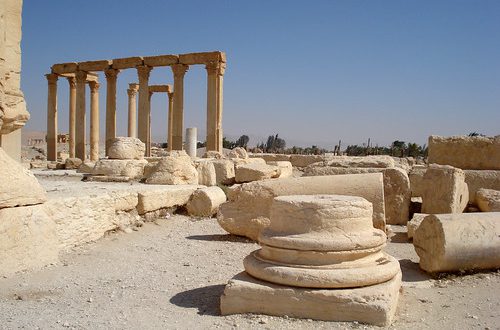 Would you walk on someone’s grave? Or cross someone’s back yard if they asked you not to? Or risk your life if you knew someone else would feel responsible if you died? They’re simple questions of common sense and respect, but neither comes into the equation when it comes to climbing the world’s most famous monolithic site.
Would you walk on someone’s grave? Or cross someone’s back yard if they asked you not to? Or risk your life if you knew someone else would feel responsible if you died? They’re simple questions of common sense and respect, but neither comes into the equation when it comes to climbing the world’s most famous monolithic site.
The traditional Aboriginal owners of Australia’s Uluru (also known officially by its European name of Ayer’s Rock), ask tourists to not to climb their sacred site. It’s considered by the local Pitjantjatjara and Yankunytjatjara (or Aangu) people to be sacred because it links them to their ancestors and to the story of the Dreamtime. The area around Uluru has many rock caves used by ancient peoples, as well as many paintings left by them.
The climb to the top of the rock is a strenuous 800m uphill hike that takes at least an hour. The path traces the route traditionally taken by a small and select group of indigenous men upon their arrival at Uluru (it is said the path crosses an ancient Dreamtime track). For this reason, and because the Aboriginal owners feel responsible for the safety of those who climb the rock has claimed the lives of 35 novice climbers over the last 20 years they ask people not to climb.
Here is the official government guidance on the matter. It in part states:
“Anangu have not closed the climb. They prefer that you out of education and understanding choose to respect their law and culture by not climbing. Remember that you are a guest on Anangu land. Anangu traditionally have a duty to safeguard visitors to their land. They feel great sadness when a person dies or is hurt.
* Please visit the Cultural Centre to learn more about the significance of Uluru in Anangu law and culture before you decide whether to climb.
* Explore the other walks available around the Park.
* Follow safety information when you are visiting the Park.”
This is all well and good but it’s not strictly true.
The Anangu didn’t ‘choose’ not to close the climb. Keeping the then-established tourist route open was a pre-condition for the government handing the land back to its traditional owners in 1985. The local people were granted a lease over the land, which was subsequently leased back to the National Parks and Wildlife Service, which jointly manages it.
Uluru is at the heart of the Uluu-Kata Tjua National Park, a UNESCO World Heritage Site, and is one of the world’s most recognisable archaeological sites. Human activity in the area dates back more than 10,000 years, though some archaeologists and geologists put the figure at more than 20,000. It attracts almost half a million tourists each year, and it’s on the short list for the new natural wonders of the world list.
The Australian National University geographer Richard Baker and his colleague Cathy Robinson conducted surveys in 2003 and 2004 to determine what percentage of visitors chose to climb. They found that 35.5% of visitors to the rock in 2004 climbed (or intended to climb) it, compared to 43% the previous year. In June 2006, Baker returned with another researcher, Hannah Hueneke, to conduct another round of surveys and to interview visitors to Uluru. They found that over one-third of those interviewed still planned to climb (or had climbed) the rock.
Baker and Hueneke found that people climb for different reasons, including different cultural beliefs, the desire to be able to say they had reached the top, and the desire to take photos from the top or to see the view. They also found a lack of prior knowledge of the ‘to climb or not to climb’ question, and the short, structured nature of many package trips meant people were often ill-prepared to fully consider the ramifications of their decision to climb. In short, many of the people who chose to climb had travelled thousands of miles to see (and climb) Uluru, and had never heard of the Anangu before arriving, let alone considered their ancient beliefs. The distance travelled (and the money spent) outweighed the call to respect someone else’s property and ancestral home.
Interestingly, 98% of those interviewed by Baker and Hueneke said they would have still visited Uluru had climbing been banned. Some visitors said they wished the climb had been closed so they weren’t forced to make the decision themselves.
Perhaps the last word should go to the traditional owners themselves. David Ross, of the Central Land Council, which represents the Anangu, told the Guardian: “You can’t climb over the Acropolis any more,” he says. “You can’t climb the Pyramids, so how come you can still climb the rock?”
Photo: Kevin Matthews



